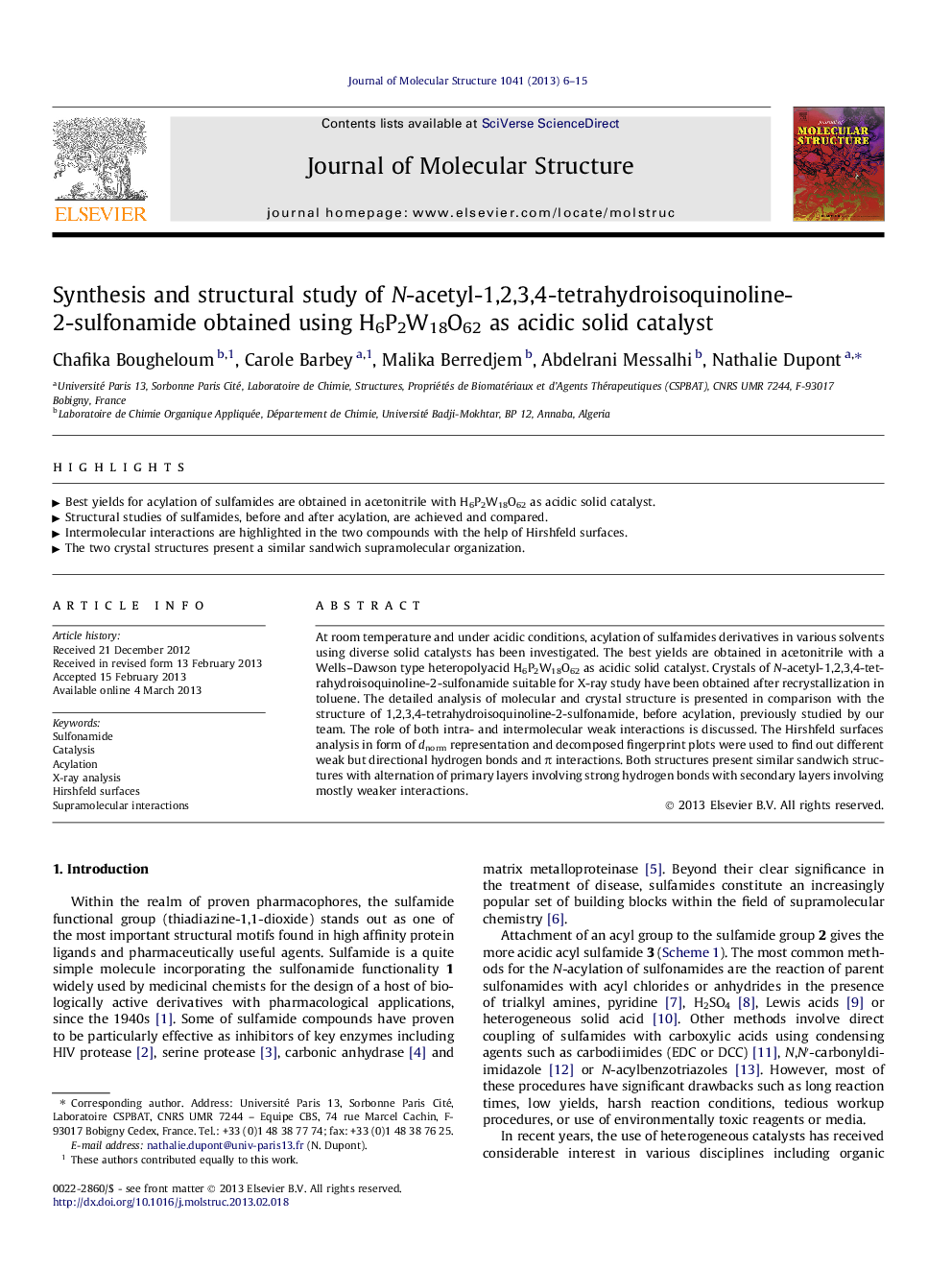| Article ID | Journal | Published Year | Pages | File Type |
|---|---|---|---|---|
| 1408838 | Journal of Molecular Structure | 2013 | 10 Pages |
At room temperature and under acidic conditions, acylation of sulfamides derivatives in various solvents using diverse solid catalysts has been investigated. The best yields are obtained in acetonitrile with a Wells–Dawson type heteropolyacid H6P2W18O62 as acidic solid catalyst. Crystals of N-acetyl-1,2,3,4-tetrahydroisoquinoline-2-sulfonamide suitable for X-ray study have been obtained after recrystallization in toluene. The detailed analysis of molecular and crystal structure is presented in comparison with the structure of 1,2,3,4-tetrahydroisoquinoline-2-sulfonamide, before acylation, previously studied by our team. The role of both intra- and intermolecular weak interactions is discussed. The Hirshfeld surfaces analysis in form of dnorm representation and decomposed fingerprint plots were used to find out different weak but directional hydrogen bonds and π interactions. Both structures present similar sandwich structures with alternation of primary layers involving strong hydrogen bonds with secondary layers involving mostly weaker interactions.
► Best yields for acylation of sulfamides are obtained in acetonitrile with H6P2W18O62 as acidic solid catalyst. ► Structural studies of sulfamides, before and after acylation, are achieved and compared. ► Intermolecular interactions are highlighted in the two compounds with the help of Hirshfeld surfaces. ► The two crystal structures present a similar sandwich supramolecular organization.
